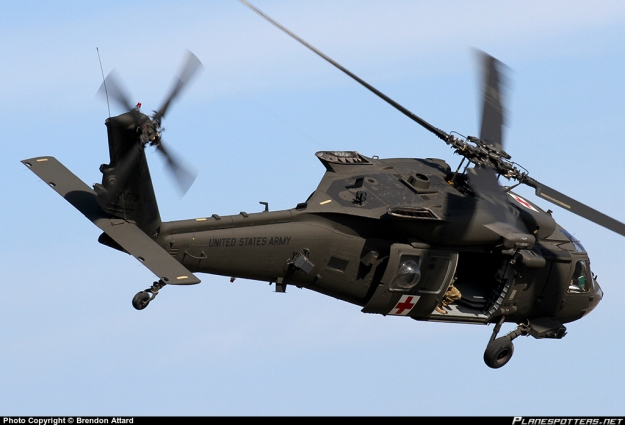Comprehending the Mechanics and Design Behind Uh 60 Helicopters
The UH-60 helicopter, typically called the Black Hawk, stands as a pinnacle of modern-day rotorcraft modern technology, symbolizing a blend of robust design and complex technicians. From its creation to its existing versions, the advancement of this aircraft showcases a combination of technology and usefulness. As we peel off back the layers of the UH-60's layout, a globe of complex systems and precise engineering comes to light. Comprehending the technicians and design behind this flexible airplane introduces a realm where precision satisfies power, and where each element plays a crucial role in achieving flight.
Background of UH-60 Helicopters
The history of UH-60 helicopters traces back to the late 1970s when the United States Military looked for a functional and advanced energy helicopter to replace its aging fleet. In reaction to this requirement, the Sikorsky Aircraft Firm developed the UH-60 Black Hawk helicopter. Presented in 1979, the UH-60 quickly became a staple in military operations as a result of its remarkable capabilities.
The UH-60 was designed to succeed in a selection of objectives, consisting of army transport, medical evacuation, electronic warfare, and special procedures. Its capacity to adjust to various duties made it an important property to the united state Army and various other army pressures worldwide
For many years, the UH-60 system has actually undertaken several upgrades and variations to enhance its performance and maintain rate with progressing mission needs. These helicopters have seen considerable service in problems such as the Gulf Battle, Afghanistan, and Iraq, showcasing their integrity and flexibility in varied operational environments. The UH-60's rich background is a testimony to its long-lasting heritage as a top energy helicopter.

Engine and Power Systems
Utilizing sophisticated propulsion technology, UH-60 helicopters are furnished with advanced engine and power systems to ensure optimum efficiency and integrity in a variety of operational scenarios. The UH-60, generally recognized as the Black Hawk, is powered by 2 General Electric T700-GE-701D engines, each qualified of delivering up to 1,940 shaft horsepower. These turboshaft engines supply the required drive for the helicopter to carry out its goals properly, including army transportation, clinical evacuation, and combat support.

Rotor System and Aerodynamics
How do the rotor system and the rules of aerodynamics of UH-60 helicopters add to their operational effectiveness and trip abilities? The blades system of the UH-60 helicopter plays an important role in providing lift and propulsion. The UH-60 includes a four-bladed, totally verbalized rotor system that permits for high maneuverability and security during flight. This style enables the helicopter to carry out a broad range of objectives, from transportation and clinical evacuation to fight operations.
The rules of aerodynamics also play a crucial role in the performance of UH-60 helicopters. The streamlined body and blades blade design reduce drag, enabling the helicopter to accomplish higher rates and much better gas efficiency. The wind resistant layout of the UH-60 additionally adds to its ability to operate in varied ecological conditions, consisting of high altitudes and hot temperature levels.
Avionics and Trip Control Equipment

In its detailed sychronisation with the blades system and the rules of aerodynamics of UH-60 helicopters, the avionics and flight control systems create an important network of innovations shaping the airplane's functional capacities. In the UH-60, these systems consist of digital display screens, communication radios, General practitioner navigating, climate radar, and auto-pilot systems.
The trip control systems of the UH-60 are in charge of equating the pilot's inputs right into the proper adjustments to the blades system, ensuring steady trip and ability to move. These systems are composed of hydraulic actuators, servos, and computer systems that interact to control the primary and tail blades, as well as other trip control surface areas. By specifically handling the helicopter's trip dynamics, these systems make it possible for pilots to perform a wide variety of missions, from transport and search-and-rescue to combat procedures, with precision and confidence.
Function and Applications in Air Travel
Avionics systems in UH-60 helicopters incorporate an array of digital systems that help in navigation, communication, surveillance, and regulating various airplane functions. Extra resources These systems include digital display screens, auto-pilot systems, communication radios, General practitioner navigation tools, and weather condition radar. Furthermore, these systems incorporate security functions such as auto-pilot settings, surface understanding cautioning systems, and security augmentation systems to improve the general safety and security and operational capabilities of the UH-60 helicopters in various missions, including army transportation, medical discharge, search and rescue, and aerial firefighting.
Verdict
In final thought, the UH-60 helicopter is a versatile aircraft with a rich background and advanced engineering. Its engine and power systems, blades system, the rules of aerodynamics, avionics, and trip control systems all work together to make it a reputable and efficient device.
In its intricate coordination with the blades system and the rules of aerodynamics of UH-60 helicopters, the Discover More Here avionics and flight control systems develop an important network of technologies forming the airplane's functional capacities.The trip control systems of why not find out more the UH-60 are accountable for converting the pilot's inputs into the appropriate modifications to the rotor system, making sure steady flight and maneuverability. Avionics systems in UH-60 helicopters incorporate a range of electronic systems that help in navigation, interaction, monitoring, and managing numerous aircraft features. Furthermore, these systems include safety and security functions such as auto-pilot settings, surface recognition advising systems, and security enhancement systems to boost the overall safety and functional capabilities of the UH-60 helicopters in different objectives, consisting of army transportation, medical discharge, search and rescue, and airborne firefighting.
Its engine and power systems, rotor system, aerodynamics, avionics, and trip control systems all work together to make it a efficient and trustworthy maker.